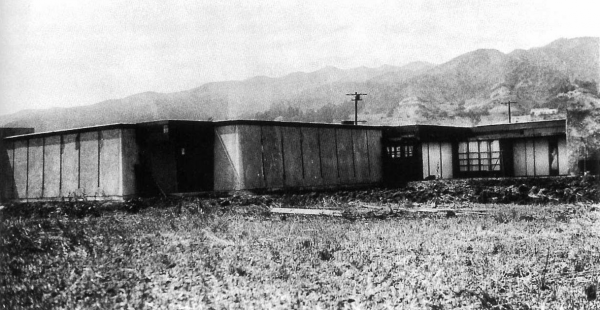
Class is in session for part two of this “refresher course” on the history of North Kings Road. Some events may seem less important than others, but knowing what came before takes on added significance as over-development and density debates rage through the neighborhood and City Hall. The first article on the history of North Kings Road was published on WEHOville last Monday.
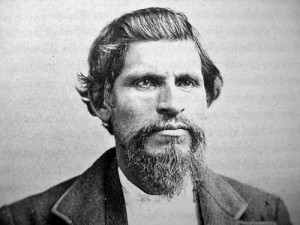
Who Says Crime Doesn’t Play?
First question: How did Kings Road help determine who would become Los Angeles’ first chief of police? The Los Angeles Times provides the answer with this account: “In 1874, the colorful robber and horse thief Tiburcio Vasquez was wounded and captured by Polish Jewish immigrant Deputy Emil Harris near what is now Santa Monica Boulevard and Kings Road. The Yiddish-speaking Harris would be rewarded for his role and became Los Angeles’ first chief of police . Vasquez also was rewarded after a fashion: While he was awaiting execution, a play based on his life opened in Los Angeles.”
The play, appropriately, was named “Bandidol,” and it debuted at the Mark Taper Forum. The Vasquez Rocks, near Newhall 40 miles north of L.A., were one of his many hideouts and are named after him.
At Least They Didn’t Call It “Green Acres”
Kings Road developed as a distinctive creative community early on, providing a unique atmosphere. A document on the City of West Hollywood’s website states that such an ambience was fostered by unusually large parcels that provided a broad, flat area for building within conventional street grids. The result was “a green and gracious expanse surrounded by an increasingly developed neighborhood.”
With that pleasant, pastoral image in mind, can you guess the name of the large real estate tract from which North Kings Road was carved? The answer: Hollywood Acres. Next question: What marketing slogan did developers use to hype Kings Road specifically? The answer: “The Newest of the High-Class Foothill Subdivisions.”
Marketing would become a more sophisticated tool in the coming decades, obviously. By 1916, two houses had been built on North Kings Road and much of the area wasn’t much more than barley fields. Those first two houses set a standard for others that would be distinguished at the least and in some cases would become architectural masterpieces. The third residence would be designed and built by Austrian-born Rudolph Schindler.
Fair Housing – Why Bother?
Consider yourself well-informed if you’re up-to-speed on the next two events. Together they show (1) how close Rudolph Schindler came to not building his studio-residence – at least not on North Kings Road, and (2) why fair housing laws and extensive real estate regulations exist today.
Here’s the backstory from Susan Morgan’s “A Short History of the Schindler House”: A pair of businessmen (developers) owned all property along the street in the early 1920s – Walter Luther Dodge and Raymond Wicks Stephens. Dodge, scion of the famous automobile brand, also was an inventor. He held a patent for Tiz, a medicine for tired feet. He built the first residence on North Kings Road at 950, aka the famous Dodge House.
First event: Dodge hand picked the fortunate few who would be allowed to purchase parcels and become his neighbors . Fair housing laws were still a thing of the future.
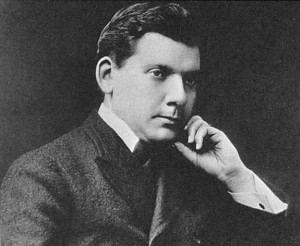
Second event: Schindler’s arrival in Los Angeles in 1920. Frank Lloyd Wright dispatched him to supervise Wright’s largest U.S. commission at the time – the Hollyhock House for oil heiress Aline Barnsdall. A year later, Schindler was looking to set up his own practice when he and investor / engineer Clyde Chace spotted the Kings Road property where the “Schindler-Chace house” eventually was built.
For Schindler, the site offered the professional advantages of living and working in an accessible “middle-class” section of a city. The area, called Sherman, was ideally located and a booming garden spot well served by the inter-urban railway system, electric utilities and the West Los Angeles Water Company. Located eight miles northwest of downtown Los Angeles, the town would be renamed West Hollywood in 1925 to emphasize its ties to its glamorous neighbor to the east.
Schindler and Chace seemingly lacked the connections to win Dodge’s blessing. So how did they eventually purchase nearly a half acre of land on Kings Road in December 1921? Researchers believe that it was a combination of Wright and the architect of the Dodge House, Irving Gill.
Most likely, Gill vouched for Schindler based on this scenario: Schindler probably viewed the Dodge House while it was being built during a West Coast trip he made in 1915. He learned of Gill’s work through his introductory visit with Wright in late 1914. Wright had lived in a Gill-designed cottage in San Diego during 1912 and 1913.
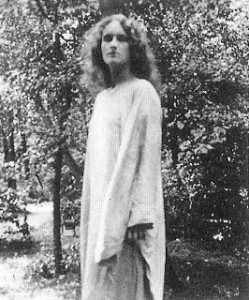
The Perils of Pauline
One of the biggest events in Kings Road’s history would have to be the decision in 1964 by the Los Angeles County Board of Supervisors to rezone the street to R-4, allowing as many as 200 housing units per piece of property – from a maximum of eight previously. Within the next nine years, eight multi-story buildings with some 400 units were constructed along the street. Classic homes on the street were demolished along the way.
How was the Schindler House able to withstand the developers’ onslaught? Architectural historians credit Rudolph Schindler’s former wife, Pauline. Even though their marriage broke up in 1927, Pauline returned to the Kings Road house often. She remained solidly committed to the brand of modernist architecture in which Rudolph excelled.
“After Schindler’s death (in 1953), Pauline continued to live in the house, staving off real estate developers, withstanding the grim consequences of the area’s re-zoning and the despoliation of Kings Road,” is how author and architectural historian Esther McCoy described those circumstances.
McCoy was instrumental in bringing the modern architecture of Southern California to the attention of the world. The Schindler House was named to the National Register of Historic Places in 1971. When Pauline Schindler died in 1977. It was purchased by Friends of the Schindler House in 1980.
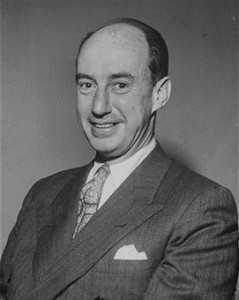
Wonk This
Adlai Stevenson’s campaign stop on Kings Road is a well-known event in his bid for the White House as the Democratic nominee in 1952. Born in Los Angeles, Stevenson gave a major address at 850 N. Kings Rd. on Sept. 11 of that year. How many are familiar with the remarks he delivered? You don’t have to be a policy wonk to appreciate what he said that day:
“In the tragic days of Mussolini, the trains ran on time as never before, and I am told in their way, in their own horrible way, the Nazi concentration camp system in Germany was a model of horrible efficiency. The really basic thing in government is policy. Bad administration, to be sure, can destroy good policy, but good administration can never save bad policy.”
Also:
“Public confidence in the integrity of the government is indispensable to faith in democracy; and when we lose faith in the system, we have lost faith in everything we fight and spend for.”
Bob Bishop is a recently retired public relations manager in the aerospace industry who has lived on North Kings Road for more than 20 years. Previously, he was public information officer for the California Manufacturing Technology Consortium, a public-private partnership to improve the quality and productivity of the state’s small manufacturers. A former professional journalist, Bishop was Los Angeles bureau chief for the former Electronic News, a national trade paper for the semiconductor and computer industries. Prior to that, he was a daily newspaper reporter for the Sun-Herald in Gulfport-Biloxi, Miss.

Fascinating article, but I’m a little confused. Bishop states that while Tiburcio Vasquez awaited execution in 1874, the play based on his life premiered at The Mark Taper Forum. Either the theatre is much older than I thought, or it took forever to get the play up and running.
Bob, thank you for these wonderful articles…your research is most impressive and quite interesting and I look forward to the next chapter. Perhaps you will feel inspired to write about other neighborhoods? I know I would enjoy the read. Thank you
The world changes. SOUTH BEACH, Miami was built for the working class to go on vacation. All the Preserved Art Deco was “saved” as the working class became the new “work full time and can’t pay my bills … let alone a modest priced small hotel room in Florida for a Vay-Kay” There was no ACT OF PRESERVATION … The Cuban Boat Lift brought so many poor, in need of housing, they moved in to the then empty (one riveria for the working class joe and his family) and The Immigrants “preservation” was simply .. they had no money, the… Read more »